A Rose by Any Other Name
If a rose by any other name would still smell so sweet, would a Ford Fusion by any other name still be a front-wheel-drive economy car? Lincoln certainly hopes not. It wants its upscale customers to view the new Zephyr as a discrete model, rather than a gussied-up Ford Fusion. Mercury harbors similar hopes/delusions for its Fusion-with-frills, the Milan. Come to think of it, the Fusion is based on the [Ford-owned] Mazda 6, whose price overlaps both the Fusion and the Milan. I suppose the answer to the conundrum posed by the incredible sameness of automotive being depends entirely on the customer's ability to smell a rat.
Fifty or sixty years ago, car buyers were easily fooled by re-badged vehicles. And even if they weren't, it didn't matter. The Big Three bestrode the US car market like a colossus. Even casual pistonheads could name every single car for sale. Auto brands were stronger than superglue. Driving a Ford, Lincoln or Mercury meant something; your car's sheet metal and badge reflected and projected your personal status. Customers who knew that their fancy new Lincoln was actually a Ford in a zoot suit didn't really care– as long as they got a good car that earned appropriate props. Brand loyalty was king.
Today, over forty major car brands produce a range of models whose aggregate is well into triple digits. Brand-related social demarcations still exist, but the lines are blurrier than a college student's Sunday morning memory. Mercedes sells low-end product, while Hyundai make an entirely convincing upmarket homonym. What's more, new models debut and disappear in a matter of months, while longer running favorites undergo dramatic restyles with increasing frequency. "Niche marketing"– creating a genre-killing product for a limited audience– is king.
Ford, GM and DCX act as if 'niche' means 'superficial.' They believe that adspin and blingery obviate the obvious long-term advantages of selling clearly delineated products with focus and depth. A Lincoln dealer recently confided to the Detroit News that he "wished the company wasn't so forthcoming about platform sharing.' Sorry; in these days of Edmunds.com and kbb.com, customers' noses are highly attuned to the slightest whiff of duplicate duplicity. Trying to palm off a Ford as a 'proper' Lincoln simply by adding some bits and pieces– a new grill and rear bumper, extra sound deadening, a softer suspension, wood, new gauges, fancy ICE and silver-effect switchgear– isn't just cynical, it's stupid. Badge engineering is fooling fewer and fewer people more and more of the time.
While the cost-savings offered by the kind of five-minute makeover described above cannot be underestimated, the damage to the car brand perpetuating the platform perfidy cannot be overestimated. If a car brand becomes known for mixing its genes with lesser machines and flogging the result at a premium (i.e. inflated) price, the road to rep recovery is both long and uncertain. Just ask Cadillac– if and when they complete their thirty year wander through the wilderness. As Caddy's ongoing recovery illustrates, even after you throw the badge engineering monkey off your back, you may still have to wait until your old customer base dies off.
Lincoln should know better. It was once one of the world's most exclusive brands. Ironically enough, the company was started by Cadillac's co-founder, Henry M. Leland. Ironically squared, Lincoln's tumble from the top began with… the Lincoln Zephyr. While the 1936 Zephyr helped the brand climb out of the depression, Lincoln's success came at the expense of the brand's premier positioning. No surprise, then, that the Zephyr was eventually canned in 1942 in favor of the similarly-priced, new-to-the-market Mercury, which was derived from a Ford chassis. Rather than carefully cultivating the loyalty of a critical cadre of brand faithful, Ford sold out Lincoln's image to cash in on badge engineering's 'easy money.'
In fact, if you're looking for the hidden force pulling GM and Ford into their respective black holes, badge engineering is it. Well, that and brand bingeing. (DCX' relative restraint in both areas accounts for its relative health.) The two forces have combined to suck the life blood out of the companies' products, until all their brands and all their cars are all pretty much of a muchness. When in-house brands are homogenous, shopping elsewhere becomes just as easy as (and more interesting than) trying to share the salesman's enthusiasm for an invidious distinction.
There's only one solution to this mess: lop off the unsustainable overlaps (Mercury, Buick, Jaguar, etc.), and then build brand-specific vehicles that share platforms and nothing else. Screw economy of scale. Customers want products with genuine individuality and integrity in every aspect, from body style to the interior to engineering. In fact, that's all they've ever wanted, no matter what you call it.
More by Robert Farago
Latest Car Reviews
Read moreLatest Product Reviews
Read moreRecent Comments
- SCE to AUX 08 Rabbit (college car, 128k miles): Everything is expensive and difficult to repair. Bought it several years ago as a favor to a friend leaving the country. I outsourced the clutch ($1200), but I did all other work. Ignition switch, all calipers, pads, rotors, A/C compressor, blower fan, cooling fan, plugs and coils, belts and tensioners, 3 flat tires (nails), and on and on.19 Ioniq EV (66k miles): 12V battery, wipers, 1 set of tires, cabin air filter, new pads and rotors at 15k miles since the factory ones wore funny, 1 qt of reduction gear oil. Insurance is cheap. It costs me nearly nothing to drive it.22 Santa Fe (22k miles): Nothing yet, except oil changes. I dread having to buy tires.
- AZFelix 2015 Sonata Limited72k when purchased, 176k miles currentlyI perform all maintenance and repairs except for alignment, tire mounting, tire patching, and glass work (tint and passenger left due to rock hit). Most parts purchased through rockauto.com.Maintenance and repairs during three years of ownership:Front rotors and all brake pads upgraded shortly after purchase.Preparing for 17th oil change (full synthetic plus filter c.$50), one PCV valve.Timing & accessory belts, belt tensioner.Coolant full flush and change.Fibrous plastic material engine under tray replaced by aftermarket solid plastic piece $110.One set of tires (c.$500 +installation) plus two replacements and a number of patches due to nails, etc. Second set coming soon.Hood struts $30.Front struts, rear shocks, plus sway bar links, front ball joints, tie rod ends, right CV axle (large rock on freeway damaged it and I took the opportunity to redo the rest of items on this list).Battery c.$260.Two sets of spark plugs @ $50/set.Three sets of cabin and engine filters.Valve cover gasket (next week).Averages out to c.$1400 per year for the past three years. Minor driver seat bolster wear, front rock chips, and assorted dents & dings but otherwise looks and drives very well.
- 3-On-The-Tree 2014 Ford F150 Ecoboost 3.5L. By 80,000mi I had to have the rear main oil seal replaced twice. Driver side turbo leaking had to have all hoses replaced. Passenger side turbo had to be completely replaced. Engine timing chain front cover leak had to be replaced. Transmission front pump leak had to be removed and replaced. Ford renewed my faith in Extended warranty’s because luckily I had one and used it to the fullest. Sold that truck on caravan and got me a 2021 Tundra Crewmax 4x4. Not a fan of turbos and I will never own a Ford again much less cars with turbos to include newer Toyotas. And I’m a Toyota guy.
- Duke Woolworth Weight 4800# as I recall.
- Kwik_Shift_Pro4X '19 Nissan Frontier @78000 miles has been oil changes ( eng/ diffs/ tranny/ transfer). Still on original brakes and second set of tires.



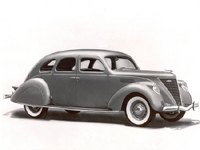















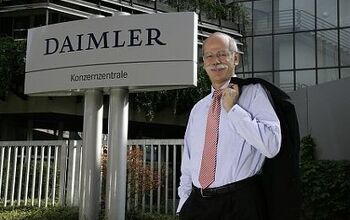
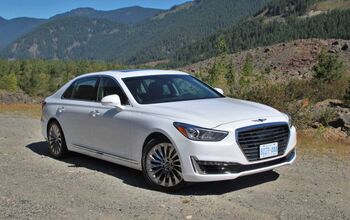
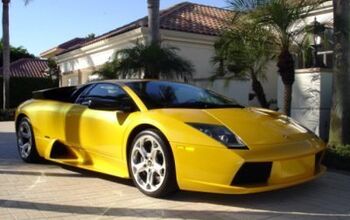
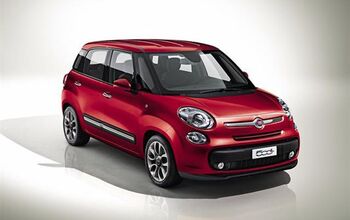











Comments
Join the conversation